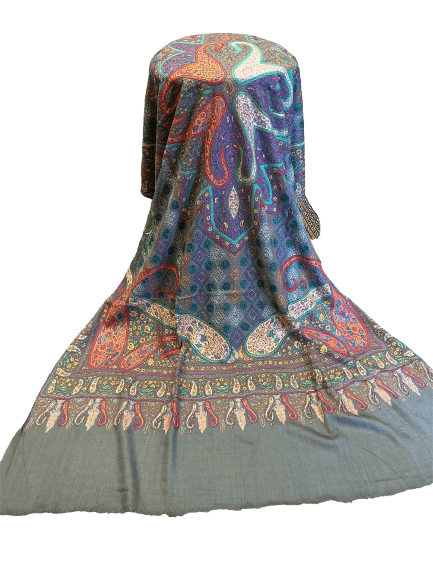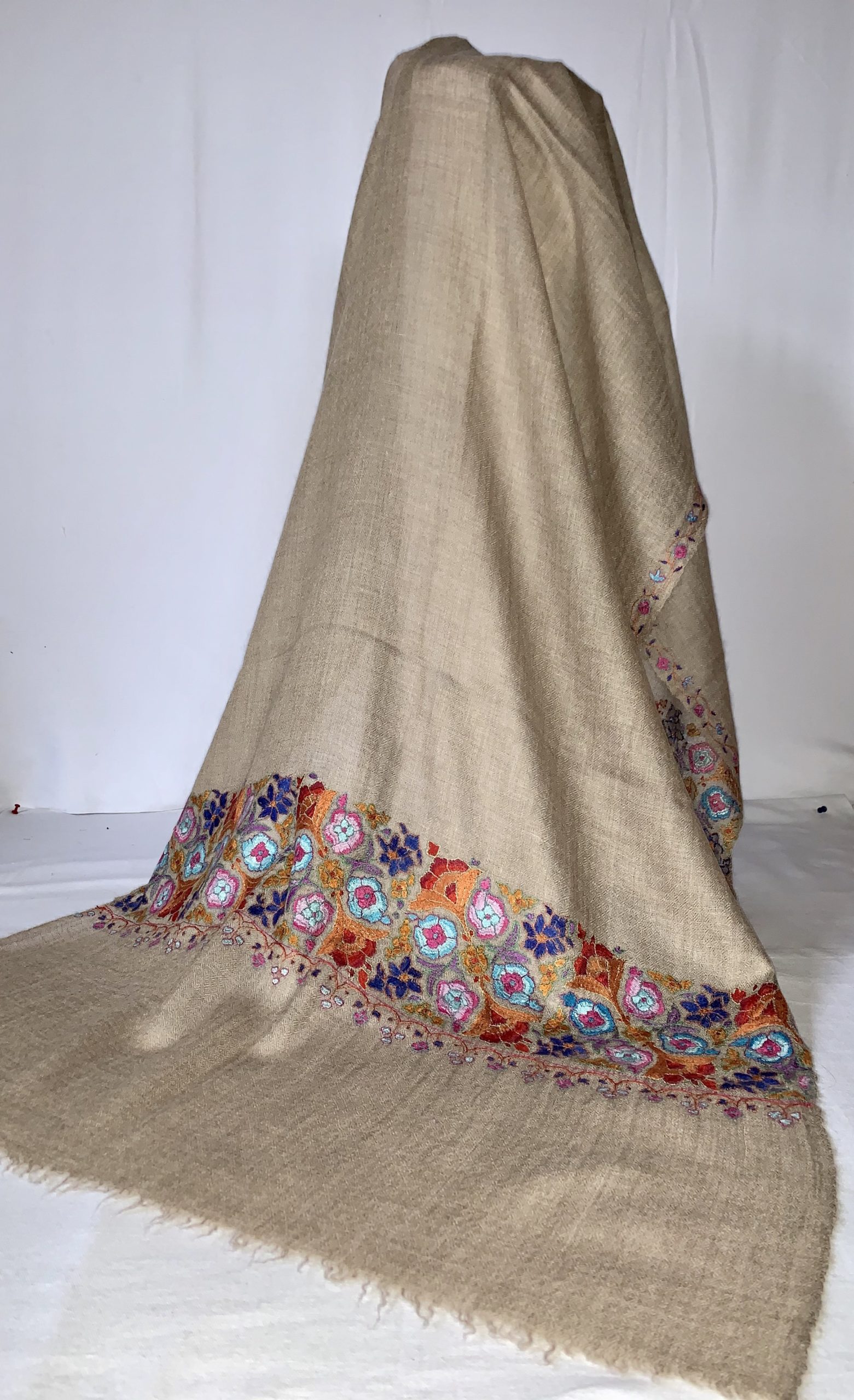About Pashmina shawls
Pashmina shawls
Where does Pashmina wool (“Cashmere”) come from?
Kashmiri shawls are made out of Pashmina, the hair of the Changthangi Goat, herded by a nomadic people group called Changpas in Ladakh in the North of India, as well as in Tibet. There is no other people group that constantly lives at such high altitudes as they do – on average at 4,500 m above sea level. “Pashm”, also called “white gold” is the hair that grows on the belly of the goats. In spring the goats are being combed in order to gain it. 80 to 450 g of Pashmina can be received per goat, the combing of one will take about 30 minutes. There are a few other kinds of goats in the Himalaya that produce Pashmina, such as in Nepal, Kargil and Himachal Pradesh. However, their Pashmina is of lesser quality.
What is so special about Pashmina wool?
Pashmina is about six times finer as human hair and has an average length of 4 cm. The delicacy of the material implies that it can only be woven or embroidered by hand, since it would be damaged by machines. Due to the high altitude the Changthangi goats live in, the material is exceptionally warm, while also being extremely soft.


How long does it take to make a Pashmina shawl?
Weaving one shawl takes about 5-7 days. After weaving, it is dyed. Then follows the embroidery if the shawl is to be embroidered. After that it gets washed before being sold.
What is the history of Pashmina shawls?
Kashmiri shawls were given as gifts by Mughal Emperors to worthy members of the royal household as a sign of honor in the 16th century. Later they were also gifted as part of the dowry of women of wealthy backgrounds. In the 18th century they became popular among aristocrats in Europe. Due to the rarity of their material and the art involved in making a real Pashmina shawl, they remain something special until today. Their softness and warmth continue to make them a sought after item.
